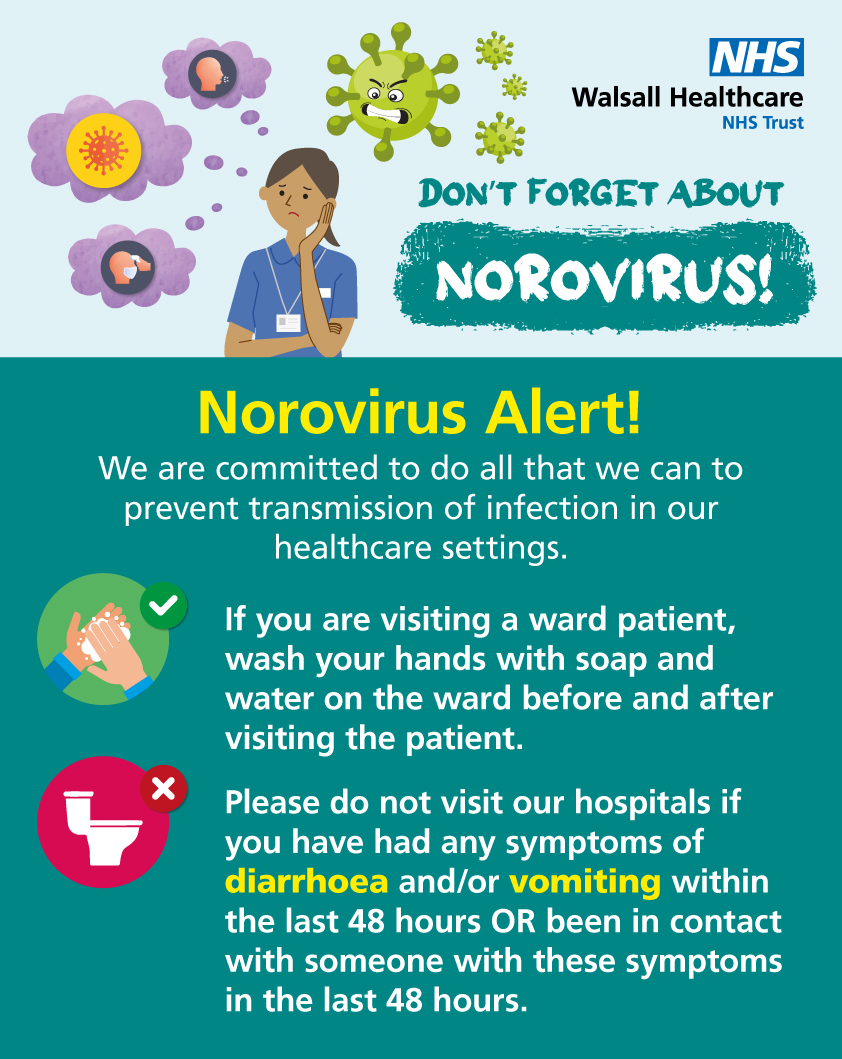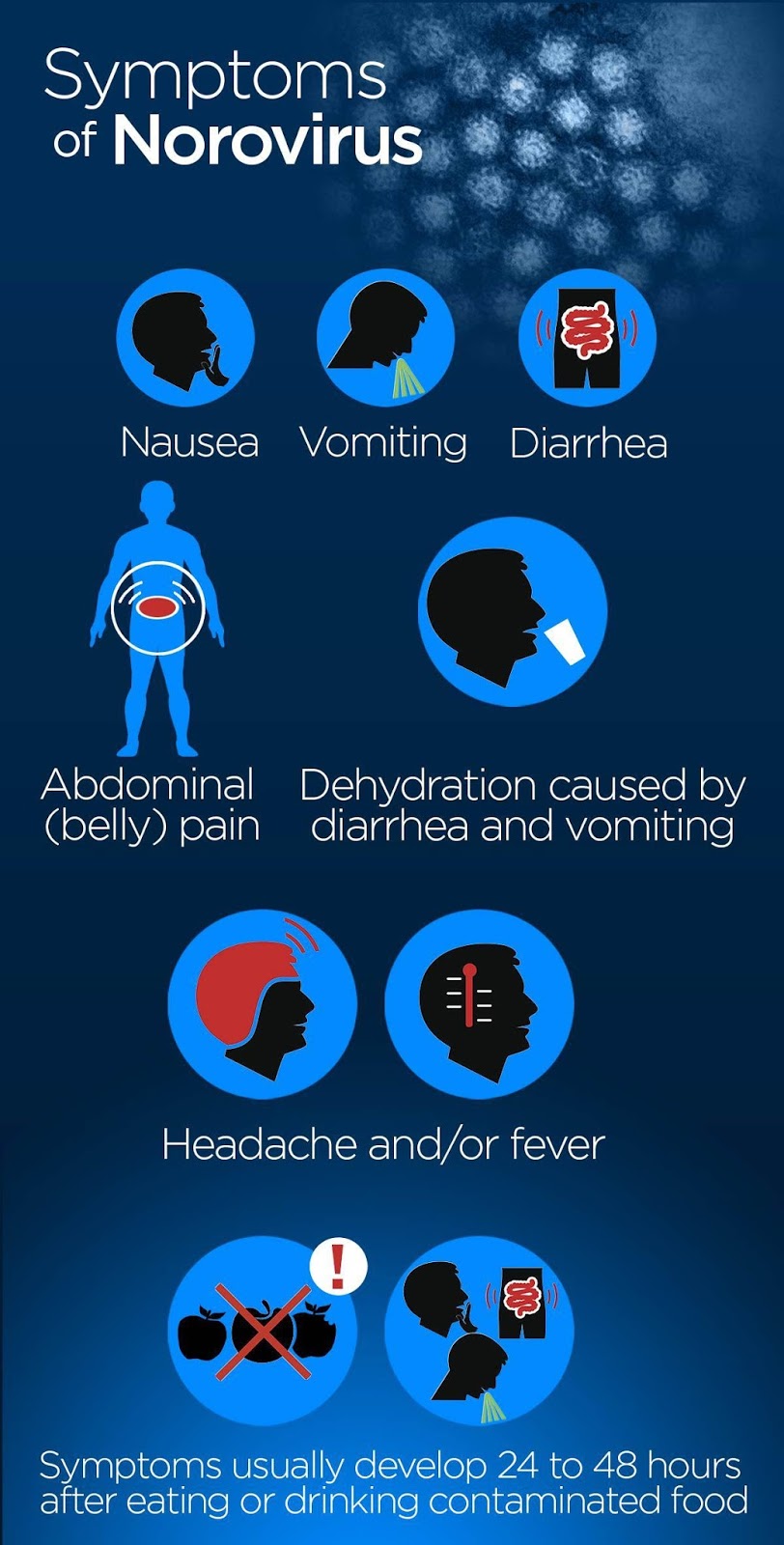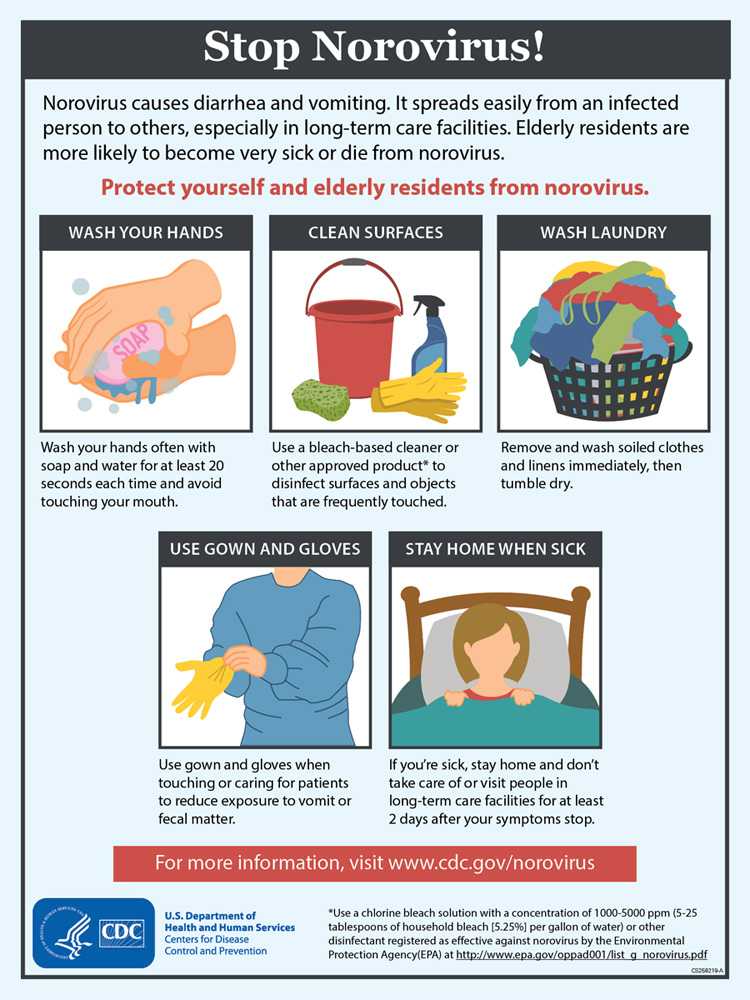Norovirus is the most common cause of gastroenteritis, a disease characterized by diarrhea, vomiting, and stomach pain. It is usually spread by the fecal-oral route, through contaminated food, water, or person-to-person contact, and can be prevented by proper hand washing and disinfection.
Norovirus Symptome, Dauer und Behandlung des Magen-Darm-Infekts Vom Herbst bis zum Frühjahr haben Magen-Darm-Infekte Hochsaison. Meist sind sie nach 48 Stunden ausgestanden - auch, wenn die hochansteckenden Noroviren Ursache für den Brechdurchfall sind. Wir sagen euch, wie ihr euch schützen könnt.
What are the symptoms of a norovirus infection? William Schaffner: Norovirus is an intestinal virus that can make you very, very sick. It is indelicately called winter vomiting disease, and it
Norovirus is a highly contagious virus that can cause vomiting, diarrhea, and stomach pain. Learn how norovirus spreads through contaminated food, water, or surfaces, and how to protect yourself and others.
Norovirus is a common and contagious virus that causes vomiting and diarrhea. Learn how to prevent, diagnose and treat norovirus infection and its complications.
Norovirus Symptome, Dauer und Behandlung des Magen-Darm-Infekts Vom Herbst bis zum Frühjahr haben Magen-Darm-Infekte Hochsaison. Meist sind sie nach 48 Stunden ausgestanden - auch, wenn die hochansteckenden Noroviren Ursache für den Brechdurchfall sind. Wir sagen euch, wie ihr euch schützen könnt. What are the symptoms of a norovirus infection? William Schaffner: Norovirus is an intestinal virus that can make you very, very sick.
It is indelicately called winter vomiting disease, and it Norovirus is a highly contagious virus that can cause vomiting, diarrhea, and stomach pain. Learn how norovirus spreads through contaminated food, water, or surfaces, and how to protect yourself and others. Norovirus is a common and contagious virus that causes vomiting and diarrhea. Learn how to prevent, diagnose and treat norovirus infection and its complications.
Noroviruses are a very contagious group of viruses that cause gastroenteritis (stomach flu), an inflammation of the stomach lining and intestines, which leads to unpleasant gastrointestinal symptoms. In healthy younger adults, norovirus is generally mild, but it can be severe in young children, older adults, or people with underlying health conditions.
Norovirus infection is usually diagnosed based on your symptoms, but noroviruses can be identified from a stool sample. If you have a weakened immune system or have other medical conditions, your health care provider might recommend a stool test to confirm the presence of norovirus.
A norovírus-fertőzés tünetei közé tartozik a hányás, hasmenés és gyomorfájdalom. A fertőzés könnyen terjed, különösen zárt közösségekben.
Norovirus is a contagious virus that causes gastroenteritis, also known as stomach flu or winter vomiting disease. Learn about its symptoms, prevention, treatment and diagnosis from Johns Hopkins Medicine.
Norovirus - Johns Hopkins Medicine
Noroviruses are a very contagious group of viruses that cause gastroenteritis (stomach flu), an inflammation of the stomach lining and intestines, which leads to unpleasant gastrointestinal symptoms. In healthy younger adults, norovirus is generally mild, but it can be severe in young children, older adults, or people with underlying health conditions. Norovirus infection is usually diagnosed based on your symptoms, but noroviruses can be identified from a stool sample. If you have a weakened immune system or have other medical conditions, your health care provider might recommend a stool test to confirm the presence of norovirus. A norovírus-fertőzés tünetei közé tartozik a hányás, hasmenés és gyomorfájdalom.
A fertőzés könnyen terjed, különösen zárt közösségekben. Norovirus is a contagious virus that causes gastroenteritis, also known as stomach flu or winter vomiting disease. Learn about its symptoms, prevention, treatment and diagnosis from Johns Hopkins Medicine.
Norovirus is a type of virus that causes gastroenteritis or stomach flu, with symptoms like vomiting and diarrhea. Learn how norovirus is spread, who is at risk, and how to prevent it from Mayo Clinic experts.
Norovirus infection is a highly contagious virus that can cause vomiting, diarrhea and stomach pain. Learn how to prevent, treat and recognize the signs of norovirus infection from Mayo Clinic experts.
Recovering from norovirus: Practice isolation and hygiene. Norovirus symptoms should typically resolve in 3 to 5 days, Pawlowski said. But the virus remains active in stool for a week after symptoms go away. If possible, continue to isolate from others in your house for 4 to 5 days. Continue thoroughly cleaning the toilet area and surfaces
What are the symptoms of a norovirus infection? William Schaffner: Norovirus is an intestinal virus that can make you very, very sick. It is indelicately called winter vomiting disease, and it
Norovirus, aka the winter vomiting bug, is on the rise - The Conversation
Norovirus is a type of virus that causes gastroenteritis or stomach flu, with symptoms like vomiting and diarrhea. Learn how norovirus is spread, who is at risk, and how to prevent it from Mayo Clinic experts. Norovirus infection is a highly contagious virus that can cause vomiting, diarrhea and stomach pain. Learn how to prevent, treat and recognize the signs of norovirus infection from Mayo Clinic experts. Recovering from norovirus: Practice isolation and hygiene.
Norovirus symptoms should typically resolve in 3 to 5 days, Pawlowski said. But the virus remains active in stool for a week after symptoms go away. If possible, continue to isolate from others in your house for 4 to 5 days. Continue thoroughly cleaning the toilet area and surfaces What are the symptoms of a norovirus infection? William Schaffner: Norovirus is an intestinal virus that can make you very, very sick.
It is indelicately called winter vomiting disease, and it
Norovirus is a stomach and intestinal virus that's very contagious. It passes easily through direct or indirect contact with an infected person. It can spread quickly in close quarters such as
Symptoms and signs of norovirus infection include vomiting, watery diarrhea, and stomach pain. Read about treatment, diagnosis, outbreak prevention, causes, contagious, transmission, prognosis, and complications. How long does it last?
Norovirus is a stomach bug that causes vomiting, diarrhea and dehydration. Learn how to avoid it by washing hands, preparing food at home and staying hydrated.
Norovirus infection is usually diagnosed based on your symptoms, but noroviruses can be identified from a stool sample. If you have a weakened immune system or have other medical conditions, your health care provider might recommend a stool test to confirm the presence of norovirus.
Norovirus infection - Diagnosis & treatment - Mayo Clinic
Norovirus is a stomach and intestinal virus that's very contagious. It passes easily through direct or indirect contact with an infected person. It can spread quickly in close quarters such as Symptoms and signs of norovirus infection include vomiting, watery diarrhea, and stomach pain. Read about treatment, diagnosis, outbreak prevention, causes, contagious, transmission, prognosis, and complications. How long does it last?
Norovirus is a stomach bug that causes vomiting, diarrhea and dehydration. Learn how to avoid it by washing hands, preparing food at home and staying hydrated. Norovirus infection is usually diagnosed based on your symptoms, but noroviruses can be identified from a stool sample. If you have a weakened immune system or have other medical conditions, your health care provider might recommend a stool test to confirm the presence of norovirus.
Norovirus, also known as Norwalk virus and sometimes referred to as the winter vomiting disease, is the most common cause of gastroenteritis. [1] [6] Infection is characterized by non-bloody diarrhea, vomiting, and stomach pain.[2] [3] Fever or headaches may also occur. [2]Symptoms usually develop 12 to 48 hours after being exposed, and recovery typically occurs within one to three days. [2]
What is Norovirus? Norovirus is a contagious virus that causes vomiting and diarrhea, which spreads quickly, especially in close quarters like schools, nursing homes, and workplaces. According to the CDC, norovirus is the leading cause of foodborne illness in the United States.
A common stomach bug is surging, according to new data from the US Centers for Disease Control and Prevention In the week of December 5, there were 91 outbreaks of norovirus reported, up from 69
Norovirus is known to cause some pretty nasty symptoms, but there are steps you can take to stay healthy and things you can do to feel better if you do get sick.
Norovirus is a common cause of vomiting and diarrhea, and foodborne illness in the US. Learn how to prevent and report norovirus outbreaks, and access resources and data from CDC.
Norovirus | Norovirus | CDC
What is Norovirus? Norovirus is a contagious virus that causes vomiting and diarrhea, which spreads quickly, especially in close quarters like schools, nursing homes, and workplaces. According to the CDC, norovirus is the leading cause of foodborne illness in the United States. A common stomach bug is surging, according to new data from the US Centers for Disease Control and Prevention In the week of December 5, there were 91 outbreaks of norovirus reported, up from 69 Norovirus is known to cause some pretty nasty symptoms, but there are steps you can take to stay healthy and things you can do to feel better if you do get sick. Norovirus is a common cause of vomiting and diarrhea, and foodborne illness in the US.
Learn how to prevent and report norovirus outbreaks, and access resources and data from CDC.
Norovirus isn't related to the flu, which is an infection of the respiratory system that triggers fever, chills, aches, and pains.In fact, there's no such thing as stomach flu.
Az elnevezés nem egyetlen fajt takar, hanem vírusok egy csoportját: a Norovirus nemzetségbe tartozó (számos altípussal rendelkező) fajok gyűjtőneve. Az emberre csak a humán norovírusok jelentenek veszélyt. Ha a humán egészségügyben a norovírusokat említik, általában ezekre a humán patogénekre gondolnak.
We would like to show you a description here but the site won't allow us.




